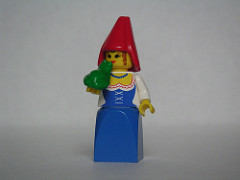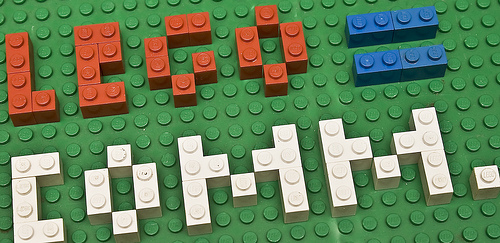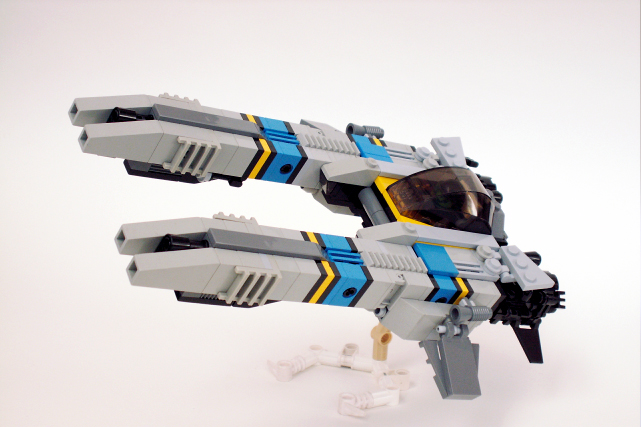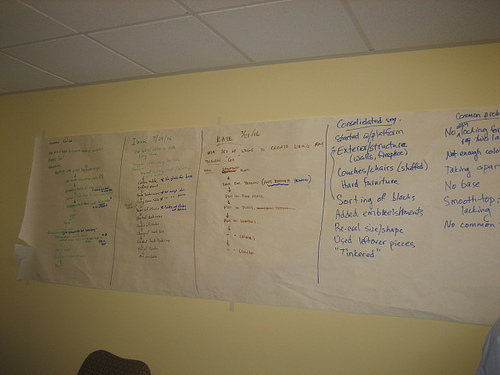 It’s been nearly two years since I last broached the subject of “LEGO blogging etiquette” here on The Brothers Brick. And though I can’t claim that we follow all these guidelines ourselves all the time, I think it’s worth revisiting this discussion every so often.
It’s been nearly two years since I last broached the subject of “LEGO blogging etiquette” here on The Brothers Brick. And though I can’t claim that we follow all these guidelines ourselves all the time, I think it’s worth revisiting this discussion every so often.
After my conversation with James Wadsworth in LAMLradio #18, I’ve been thinking a lot about what makes some LEGO blogs “good” and what other blogs might consider improving. This is all just my own opinion, but I’ve been at this for almost three years, so I hope you’ll indulge me for a bit.
Give the builder credit
Giving proper attribution is one of the most important aspects of referencing a created work, whether it’s a painting, poem, or photo of a LEGO creation. When you blog someone’s LEGO creation, make an effort to find out what the builder’s primary “home” is online, and then link to it. Do a quick search and see if you can use the person’s real name instead of “L3gof@n20O8”. Real names make the Internet more human.
There’s very little that bothers me more than seeing a LEGO picture on some random blog or Web site with a description like “Check out this awesome pic I found!” No name. No link to the builder’s Web site, Brickshelf gallery, blog, MOCPage, or Flickr photostream. You know what? Ethically, that’s stealing, and legally, you’re probably breaking copyright law or the photo’s license.
Give other blogs credit
The “via” link is another critical component of general blogging etiquette. If you see a LEGO creation on someone else’s blog for the first time and you want to highlight it on your own, by all means, do so. But be sure to say where you found what you’re blogging.
Add value
Opinions are good. Well-informed, well-written opinions about LEGO creations that point out something the average reader might miss are even better.
Avoid irrelevant or internal discourse. Not to pick on some of you who’re probably reading this, but “I’m hungry” or “Hey guys, why aren’t you posting anything here?” aren’t really interesting to your readers. ;-)
Link generously
The World Wide Web is built on links (a series of tubes, if you want to get technical). There’s more to linking than what I’ve already suggested — not just linking to LEGO builders’ sites and including “via” links.
Try going the extra mile and linking to other relevant sites. A link to a builder’s blog is always a nice gesture, but your readers probably really want to see the person’s LEGO creations. Be sure to link to their Brickshelf gallery, Flickr photostream, or MOCPage.
Add permanent links to other LEGO blogs. Maintaining a blogroll in your side bar tells your readers who you read, and tells your fellow bloggers that you read and support their blogs.
Yes, every link is an opportunity for the reader to leave your blog, but if what you’ve blogged or what you’re saying is interesting, they’ll be back. Also, bloggers who are using tools such as Google Analytics or Technorati (see below) will see that you’ve linked to them, and will likely reciprocate.
Interact with the rest of the LEGO fan community
There’s a whole world of LEGO fandom beyond the blogosphere. There’s nothing wrong with having a blog and posting the cool stuff you see on sites like Brickshelf and Flickr, but consider joining the broader conversation taking place among LEGO fans through online forums (under “LEGO Communities” in our side bar), offline LEGO users groups (LUGs), conventions, and so on.
We have the technology
Take advantage of all the tools and technologies that are available to you in this marvelous age (though I’m still disappointed we don’t have flying cars). Here are just a handful of the geeky things I find indispensable:
Earn the right to advertise
The costs of hosting your own Web site (such as Brothers-Brick.com) can add up over time. If you’re hosting your own LEGO blog, by all means, put up affiliate banners, ads, or whatever you need to do to pay the bills.
But if you’ve just started a new blog on a free service like Blogger and you plaster your blog with all manner of advertising and sprinkle your posts with Google ads, you’re clearly not in it for the love of LEGO. You might even be a splog. That’s not going to earn the respect or readership of LEGO fans (and I’ll probably remove you fairly quickly from our blogroll).
It’s not about you (unless it is)
The purpose of your LEGO blog may be just to post your own creations somewhere. Doing that is great! If you want to specialize in something, though (I don’t think there’s a Clikits blog yet), the focus of your posts should be the creations and their builders, not you.
In a sense, you’re driving traffic away from your LEGO blog, but like I said earlier, if what you’re saying is interesting, your readers will be back.
Do one thing and do it well
This is something we’ve failed at miserably, but in doing so, we’ve succeeded at something else. I started this blog to highlight my own minifigs, turned “Dunechaser’s Blocklog” into a general minifig blog, started blogging non-minifig creations, and then brought on additional contributors to cover various themes. We’re now an “everything LEGO” blog, but we’ve been doing that for long enough now that “everything LEGO” has become our mission.
For those of you considering starting a LEGO blog or who’ve just gotten started, decide now what you want your blog to be, and then stick with that plan. Setting up a blog on any of the free services is super-easy, and blogging is such a freeform medium that it’s easy to lose focus. But sticking with one theme (say, Space or Bionicle) or one type of LEGO creation (such as vignettes or microscale) will likely earn you more respect, credibility, and readership than trying to be an “everything” blog from the start.
Keep at it
There are only a handful of current LEGO bloggers who have been doing what we do for longer than a year or so. Sadly, most LEGO blogs only last a few months. Azumu of BINGO and Bruce inspired me to start blogging back in 2005, and they’re still updating their blogs regularly.
It’s understandable to get bored or burn out, and you’re certainly under no obligation to stick with something you no longer find enjoyable, but if you’re reading this, you probably want your blog to be successful. Being successful at LEGO blogging over the long term requires, well, sticking with LEGO blogging over the long term.
Innovate
Ultimately, the success of your blog will likely hinge on whether or not you’re doing something original. Perhaps doing the opposite of everything I’ve suggested here will result in unforeseen success!
So, in the interest of innovation, what ideas do you have to make LEGO blogging better? Have I missed anything? Am I flat out wrong?
Let’s discuss.
The Brothers Brick is funded by our readers and the community. Articles may include affiliate links, and when you purchase products from those links, TBB may earn a commission that helps support the site.
 Some of us don’t necessarily share our LEGO obsession with our significant others, as much as we try over the years to lure them into LEGO geekery with ploys as diverse as Paradisa, including the kids while building, DUPLO, collecting princess minifigs, or the latest adorable Creator sets.
Some of us don’t necessarily share our LEGO obsession with our significant others, as much as we try over the years to lure them into LEGO geekery with ploys as diverse as Paradisa, including the kids while building, DUPLO, collecting princess minifigs, or the latest adorable Creator sets.





 And we’re cool with that. We love the fact that you find what we do interesting enough to subscribe to our
And we’re cool with that. We love the fact that you find what we do interesting enough to subscribe to our 














